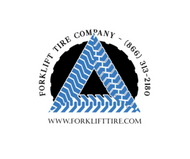23rd Mar 2025
Finding the right replacement forklift parts is crucial to ensuring the smooth operation and longevity of your forklift. While both OEM (Original Equipment Manufacturer) parts and used forklift parts are available, it is essential to consider more than just the price. Choosing cheap, low-quality parts can lead to higher costs in the long run due to frequent breakdowns and safety hazards.
To make the right decision when purchasing forklift parts, ask yourself the following key questions.
1. Are the Parts Compatible with My Forklift?
Even though all forklifts perform similar functions, they are not built the same. Some parts may look alike but have slight structural differences that can affect performance.
Why Compatibility Matters:
- Using incompatible parts can lead to malfunctions, reducing forklift efficiency.
- Poorly fitted parts may cause mechanical damage, leading to costly repairs.
- An ill-fitting part increases the risk of safety hazards, including accidents in the workplace.
How to Ensure Compatibility:
- Cross-check the part number with your forklift’s specifications.
- Consult your forklift manufacturer or supplier before purchasing.
- If unsure, seek advice from a professional forklift parts dealer.
- Look at user manuals or manufacturer websites for guidance on the correct parts.
- Ensure that the material and durability of the part match the required standards.
2. If Used, Are They Older Than Seven Years?
If you are considering used forklift replacement parts, you must be cautious about their age and condition. The older a part is, the more likely it has undergone significant wear and tear, which may lead to poor performance or even failure.
Why Age Matters:
- Parts older than seven years have likely surpassed their useful life.
- Aging parts are more prone to wear and tear, making them unreliable.
- Using old, weak parts increases the risk of forklift breakdowns and accidents.
- Some older parts may not be compatible with modern forklifts, leading to functionality issues.
How to Check the Age and Condition of Used Parts:
- Ask the dealer for the age and history of the used part.
- Inspect the part for visible wear, rust, or cracks.
- If possible, opt for refurbished parts that come with a warranty.
- Consider requesting a performance test for critical components like engines, batteries, and hydraulic systems.
- Avoid using parts that have visible rust, cracks, or excessive wear.
3. Is Your Supplier a Professional Dealer?
Where you buy your forklift parts matters just as much as the parts themselves. Purchasing from a reputable supplier ensures you get reliable, high-quality components. Buying from unauthorized dealers may expose you to counterfeit or substandard parts that could compromise your forklift’s performance and safety.
Why Buying from a Trusted Dealer is Important:
- Professional dealers provide expert guidance in choosing the right part.
- Established suppliers offer higher-quality forklift parts that meet industry standards.
- Many reputable dealers provide warranties and return policies for added assurance.
- Trusted dealers maintain an inventory of genuine and tested parts that meet regulatory standards.
How to Choose the Right Dealer:
- Research your dealer’s reputation and customer reviews.
- Look for dealers who specialize in your specific forklift brand.
- Ensure the dealer provides warranty options for the parts they sell.
- Ask whether the dealer provides certified replacement parts that meet safety standards.
- Confirm that the supplier offers after-sales support in case of issues with the part.
4. What Type of Replacement Parts Should You Consider?
There are different categories of replacement forklift parts, each with varying levels of quality, durability, and cost. Choosing the right type of part can have a significant impact on the performance and lifespan of your forklift.
Types of Replacement Forklift Parts:
- OEM Parts: Manufactured by the original forklift manufacturer, ensuring perfect compatibility and performance. They tend to be more expensive but are reliable and long-lasting.
- Aftermarket Parts: Produced by third-party companies, often at a lower cost than OEM parts. Some aftermarket parts are high-quality, while others may lack durability.
- Used Parts: Pre-owned components that have been removed from other forklifts. These are more affordable but come with higher risks of wear and reduced lifespan.
- Refurbished Parts: Used parts that have been restored to working condition. These are a better alternative to standard used parts, offering more reliability at a reduced cost.
How to Choose the Right Type:
- If you want guaranteed quality, go for OEM parts.
- If you need a budget-friendly alternative, consider high-quality aftermarket parts.
- If you are on a tight budget, used or refurbished parts can be an option, but ensure they are in good condition.
- If the part is critical to forklift safety, always opt for new and high-quality parts.
Final Thoughts
When purchasing replacement forklift parts, always ensure they are compatible with your forklift, avoid old and worn-out parts, and buy from a trusted professional dealer. Making the right choice will keep your forklift running efficiently, reduce costly downtime, and improve workplace safety. Additionally, consider the type of replacement parts carefully to balance cost and performance.
At Forklift Tire Company, we provide high-quality forklift tires and parts to keep your operations running smoothly. Visit our online store for the best deals or contact us at sales@forklifttire.com for expert assistance.






